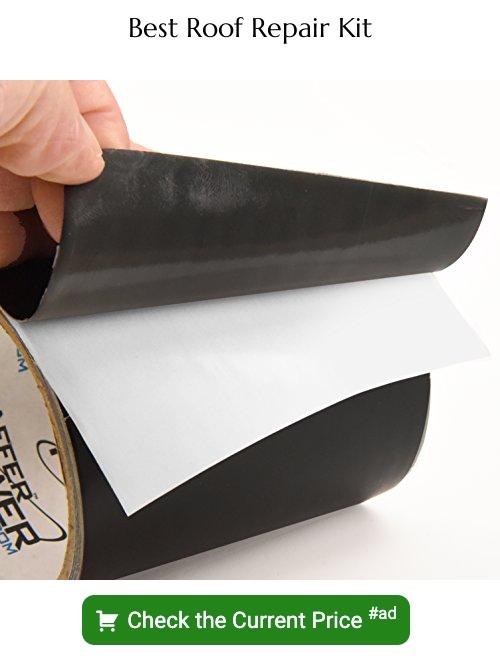Last updated on
Discover in this exhaustive informative guide how to secure free roof replacement grants to safeguard your home without straining your budget.
Key takeaways:
- Owners of single-family residences qualify for roof replacement grants.
- Grants offer financial aid that doesn’t require repayment.
- Some programs provide materials and labor for repairs.
- Requirements may include income thresholds and property ownership.
- Apply for government grants through relevant agencies and follow instructions.
Eligible Recipients

Owners of single-family residences often qualify for roof replacement grants, particularly if they meet low-income criteria or are elderly or disabled.
Non-profit organizations focused on housing issues, such as those providing homes for low-income families or veterans, are also potential recipients.
Additionally, landlords who rent properties to low-income tenants may be eligible for certain programs aimed at maintaining affordable housing stock.
Historical or landmark property owners might receive grants to preserve the architectural integrity of culturally significant buildings.
It’s crucial to check specific program guidelines as recipient eligibility can vary by grant.
Types of Assistance
Grants for roof replacement cater to various needs, offering financial aid that doesn’t require repayment, unlike traditional loans. Assistance may include complete coverage of replacement costs or partial funding, depending on program limitations and availability of funds.
Some programs extend beyond monetary aid, providing materials and labor for seniors, the differently-abled, and low-income families. This hands-on assistance ensures that qualified individuals receive both the materials and skilled labor necessary to carry out durable roof repairs or replacement.
Additionally, certain grant programs may facilitate lower-cost loans or offer tax credits to offset the expenses related to energy-efficient roofing upgrades. These incentives encourage investments in sustainable home improvements that lead to long-term cost savings and environmental benefits.
Partnerships between government entities and local contractors can also result in discounted services for homeowners, further easing the financial burden. These collaborations ensure that roof replacements are performed to a professional standard while remaining cost-effective for those in need.
Eligibility Requirements
Individuals seeking free roof replacement grants must meet specific criteria set forth by the providing agency. Common requirements include:
- Income Thresholds: Applicants often must fall below certain income limits, typically defined as a percentage of the area median income.
- Property Ownership: Proof of homeownership is usually required, with the property often stipulated as the applicant’s primary residence.
- Insurance Status: Some programs may necessitate a lack of sufficient homeowners insurance coverage that would otherwise pay for roof repairs or replacement.
- Location: Grants may be available to residents of certain geographic areas prone to natural disasters or in designated redevelopment zones.
- Condition of Roof: There may be specifications regarding the age or condition of the roof, with priority given to those in urgent need of repair for safety reasons.
- Efficiency Standards: For energy efficiency improvement programs, roofs may need to meet specific environmental standards after replacement.
It is important for applicants to gather necessary documentation, such as tax returns, deeds, and proof of residence, in advance to streamline the application process.
How to Apply for Government Grants
Begin by identifying relevant grants through the Department of Housing and Urban Development (HUD) or the USDA Rural Development program. Take note of specific application periods and deadlines, as timing is critical.
Gather required documentation which may include proof of income, property ownership, identification, and a detailed explanation of your need for a roof replacement.
Complete the application fully and accurately. Incomplete or incorrect applications can lead to delays or denial of assistance.
Include photographs of your current roof’s condition and any supporting documents that establish the urgency for repairs or replacement.
Consult with a grant advisor or representative if available. They can provide insights on the application process and offer guidance to improve your chances of success.
After submission, monitor your application status and respond promptly to any follow-up requests for information or clarification from the granting agency.
Contact Information
To begin the application process or to seek further information on roof replacement grants, directly reaching out to the appropriate agencies is crucial. Interested individuals should prepare to contact:
- HUD Local Office: The U.S. Department of Housing and Urban Development operates field offices across the country. These serve as primary points to inquire about housing repair programs and grants.
- State Housing Finance Agencies: Every state has an agency dedicated to housing affairs, which can provide specific details on state-funded home improvement programs.
- USDA Rural Development Office: Residents of rural areas may find tailored assistance through local USDA offices that administer the Section 504 Home Repair program.
- FEMA: In cases of natural disaster-related damage, contacting FEMA is a necessary step to determine eligibility for home repair assistance.
Ensure you have your property information, income details, and an understanding of your repair needs before reaching out, as these will likely be required during initial discussions. Websites for these agencies also offer a wealth of information, including contact forms and direct lines to assistance programs.
FAQ
Who is eligible for government home improvement grant in Illinois?
Eligibility for the government home improvement grant in Illinois requires the applicant to be a resident of Illinois, own and occupy the home for which the grant is sought, be considered as ‘low-income’ by US Department of Housing and Urban Development standards, and demonstrate financial need.
What is the Ohio housing Assistance Grant Program?
The Ohio Housing Assistance Grant Program, also known as the Housing Development Assistance Programs (HDAP), offers grants and loans aimed at the development and preservation of affordable housing, sourced from the HOME Investment Partnerships Program and the Ohio Housing Trust Fund.
Can I get a grant for new roof Florida?
Yes, through the My Safe Florida Home Program, residents of Florida can obtain a grant of up to $10,000 for new roofing and windows.
Is there a program to help seniors with home repairs in Virginia?
Yes, the Essential Home and Accessibility Repair Program (EHARP) in Virginia offers financial assistance for home repairs and accessibility improvements for low-income residents, specifically targeting health, safety, and physical accessibility concerns.
What resources are available for low-income families needing roof repair in California?
Low-income families in California needing roof repair can avail assistance from programs like the California Department of Housing and Community Development, Habitat for Humanity’s Home Preservation Program, the Low-Income Home Energy Assistance Program (LIHEAP), and several local non-profit organizations that provide affordable housing and repair services.
Are veterans eligible for a special type of roof replacement grant in Texas?
Yes, veterans in Texas are eligible for a special type of roof replacement grants through programs such as the Veterans Housing Assistance Program.
How can Massachusetts residents apply for the Homeowner Rehabilitation Assistance program for roof repairs?
Massachusetts residents can apply for the Homeowner Rehabilitation Assistance program for roof repairs by filling out an application form available from their local municipality or housing authority, meeting the specific income-eligibility requirements, and following any additional application instructions provided by the program.





